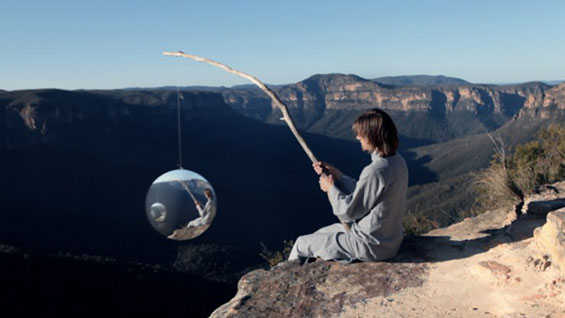
There has been a great deal of interest in last week’s editorial by Ivor Indyk on the recently announced cuts to the Australia Council. I don’t have much to add to his reflections or to the many other criticisms and commentaries on the practical (though still somewhat unclear) implications of the Arts Minister’s decision to take $104 million from the Australia Council to create a new National Program for Excellence in the Arts. Indyk did, however, raise one particularly interesting historical point, which might offer a way into the context and perhaps the reasoning behind the decision.
Discussing the government’s claims of discrimination and its appointment of an ideologically suitable judging panel for last year’s Prime Minister’s Literary Awards, Indyk detected the echo of an argument that dated back to the 1980s:
you would have thought that the Ministry for the Arts might have found a younger generation of appropriate judges who had come to prominence in the 30 years since then. Their rhetoric, and their appointments, make it look like the Minister and the Ministry have their gaze firmly locked on the past.
It is something of a received idea for those on the Right that, while the arts are of course of tremendous importance, the people who actually make the art are for the most part ideological opponents. Unlike a number of other right-wing shibboleths, this is not an unreasonable assumption. The creative class in Australia does tend to lean to the Left – not exclusively, of course, but it seems fair to say that this is true of a substantial majority. The interesting question is why this should be the case. There are some historical reasons. Australian literature, for example, has a long-established tradition of leftist writing. But if it is the case that, over the past few decades, the arts community has come to be identified with the political Left to an even greater extent than in the past, then part of the explanation must lie in the fact that this has coincided with the rise of an aggressive species of neoliberalism, which regards the unforgiving realities of the marketplace as the ultimate arbiter of all things. To become a writer or an artist or a musician in Australia requires a person to reject this prevailing ideology and its utilitarian assumptions, at least initially, even if he or she does go on to succeed in the marketplace.
If the Minister’s decision ‘looks like war’, as Indyk observes, that’s because it is – though it seems like an oddly skewed conflict, based on what would appear to be dated and unhelpful assumptions. The so-called ‘culture wars’ that began in the 1980s are an American invention, part of a neoconservative backlash against the liberalising cultural revolution of the 1960s. Much of its rhetoric was imported into mainstream Australian political discourse in the 1990s, as conservatives began to stake their integrity on a defence of the enduring value of high culture and to deplore the pernicious ideas of ‘cultural relativists’. The arguments this generated have largely run their course. The literary critic James Wood observed recently that the so-called ‘theory wars’ of the 1980s and 1990s seem to have ended in a kind of fruitful draw – it turns out that an appreciation for Great Books can happily and even beneficially coexist with a more open-ended and inclusive understanding of cultural value. A recently published cultural history by Andrew Hartman, A War for the Soul of America (2015), which covers the same late-century period, argues that the ‘logic of the culture wars has been exhausted’. Yet the Australian government and its advocates are still employing the same unreconstructed culture war rhetoric. We can perhaps take as an emblematic moment the peculiar spectacle of the Prime Minister, at the presentation ceremony for his own literary awards last year, standing before a room full of writers, most of whom were probably better read than he is, and encouraging them to read the Western Canon.
When asked this week in a Senate Estimates hearing why he had not announced his arts policy before the election, Senator Brandis pointed out that he had delivered a major speech as Shadow Minister for the Arts in western Sydney in August 2013. The speech, which set out the six ‘core principles’ that would guide Coalition policy (‘excellence, integrity, artistic freedom, self-confidence, sustainability and accessibility’), was hazy on the details. Perhaps its most telling aspect, however, was not its tactical vagueness, but the fact that its arguments were contradictory. Outlining the first of his criteria – ‘excellence’ – Senator Brandis observed:
One of the besetting failures of Australia’s cultural policy has been an obsessive concern to avoid being seen as ‘elitist’. Of course, the arts should be accessible to all Australians. However arts policy – and public money invested in the arts – have too often rewarded inwardness, mediocrity and political correctness, in the name of avoiding the elitist tag.
Later in the speech, he turned his attention to the issue of ‘accessibility’, arguing that
Labor’s approach to arts funding too often reflects a snobbish, politically correct obsession with the tastes of a small, conceited and self-selecting elite, and a condescending attitude towards popular taste.
It would seem that the Minister believes cultural policy is failing because it is not elitist enough. But it is also failing because it is too elitist.
On one level, the contradictory nature of the Minister’s rhetoric on this point is not surprising. He was, at the time, a Shadow Minister in an opposition that was trying to win government. His policy statement was also a partisan attack. And when one is beating up one’s enemies, who cares whether you give them a smack in the head or a kick in the pants? Why not give them one of each?
But it is one thing to deal in political clichés (political correctness, elites and so forth) when they are being deployed as a form of partisan abuse; it is another matter to treat them as substantive categories on which to base a funding policy. What is disappointing, though not necessarily surprising, about the Minister’s position – as far as it is possible to extrapolate a coherent position from his public statements – is that he seems to regard large sections of the creative class as foes to be vanquished, and that he is not making a distinction between his culture war rhetoric and reality.
At the beginning of his speech, Senator Brandis takes a shot at Wayne Swan, calling him ‘as determined a philistine as you would ever meet, and proud to be so’ – an allusion, perhaps, to the former Treasurer’s professed enthusiasm for the music of Bruce Springsteen. Senator Brandis likes to present himself an educated and cultured man. Yet there are many ways to be a philistine, and many things one can be a philistine about. The term ‘philistine’ comes down to us from the nineteenth century poet and critic Matthew Arnold (who borrowed the term from the German poet Heinrich Heine), and he did not use the term to mean simply an uncultured person, but more specifically a member of the aspirational middle class, someone whose sole focus is material gain. He meant someone who embodies the principles of economic liberalism. (The Prime Minister, incidentally, described the recent budget as one that will ‘encourage the creative people in our country’ – he was, of course, referring to small business owners.)
The political identity and the economics of the arts sector are not at all straightforward. As Jeff Sparrow points out in a long and considered essay:
While many artists have liberal politics, they’re also often committed to building their own profile through competitive achievement. Artists are not unionised – indeed, many are deeply suspicious of collectivity. The desperation of many creative people to succeed means they’re often willing to underquote, to put in extra hours, to accept unpaid internships and even to work for free.
Now, I am strongly in favour of ‘excellence’ in the arts, because I am as a general rule strongly in favour of any non-specific concept with positive connotations. But the many writers and artists Minister Brandis appears to be targeting with his evisceration of the Australia Council, though they may well be his perceived ideological opponents, are also people who know and care about art, music and literature; they are the ones creating the culture. The cuts will have a detrimental effect on many organisations and individuals who are no less committed to ‘excellence’ in the arts than the Minister himself. It remains to be seen how the new National Program for Excellence in the Arts will function, but at the moment it would appear that the crucial criterion for judging the results of its future decisions may not be that of ‘excellence’, but another of the Minister’s stated principles: ‘artistic independence’.
This week Sydney Review of Books turns its attention to some new Australian fiction. In ‘Formed and Tested’, Sophia Barnes surveys four books by young, up-and-coming writers: Abigail Ulman’s Hot Little Hands, S. J. Finn’s Down to the River, S. A. Jones’ Isabelle of the Moon and Stars, and Emily Bitto’s recent Stella Prize-winning debut novel The Strays. Though these books range widely in their themes and subject matter, Barnes detects a common thread of resilience in their protagonists:
At the centre of each of these narratives – nine short stories and three novels – is a woman or a girl. Some are empathetic, others cruelly selfish; some are extroverts and others aloof; some are acerbically witty and others dangerously naive. Despite their diversity and their different locations in history, place and time of life, most of them are far more resilient than they perceive themselves to be … these girls and women – from adolescence and young adulthood to middle-age – must negotiate the tentative intimacies of old and new friendships, the fluid parameters of female sexual subjectivity, the irruptive power of long-buried family secrets and the daily reality of mental illness.
Our second essay is ‘Fear of Life’, Julian Novitz’s examination of Steve Toltz’s Quicksand, the highly anticipated follow-up to Toltz’s acclaimed debut novel A Fraction of the Whole, which was shortlisted for the Man Booker Prize. Novitz finds Quicksand to be similar in style to its predecessor, but somewhat less successful in its execution. This is, Novitz suggests, a result of the novel’s attempt to invert the themes of its predecessor and the constraints this places on the novel’s characterisation, particularly that of its central protagonist, Aldo Benjamin, whom Toltz subjects to an unending series of misfortunes:
to describe him as a ‘bad luck character’ might be something of an understatement. Aldo has the worst luck imaginable. Every movement in his story begins badly before rapidly deteriorating; any temporary change in his fortune heralds an even worse disaster to come. For Aldo, the fire is usually a brief, retrospectively pleasant interlude on his journey between frying pan and the earth’s molten core.
From the Archives this week looks back at another young Australian writer, Ceridwen Dovey. In ‘Go Ape’, Delia Falconer reviews Only the Animals, Dovey’s collection of stories about the lives of animals, arguing that
when it comes to animal stories in literature, the academic mood is changing. Over the last decade, scholars have been moving away from the assumption that animal protagonists are only furry stand-ins for human dramas. Instead, they are re-reading fiction to trace what it tells us about animals themselves, or about the complex entanglements of our lives with theirs.
